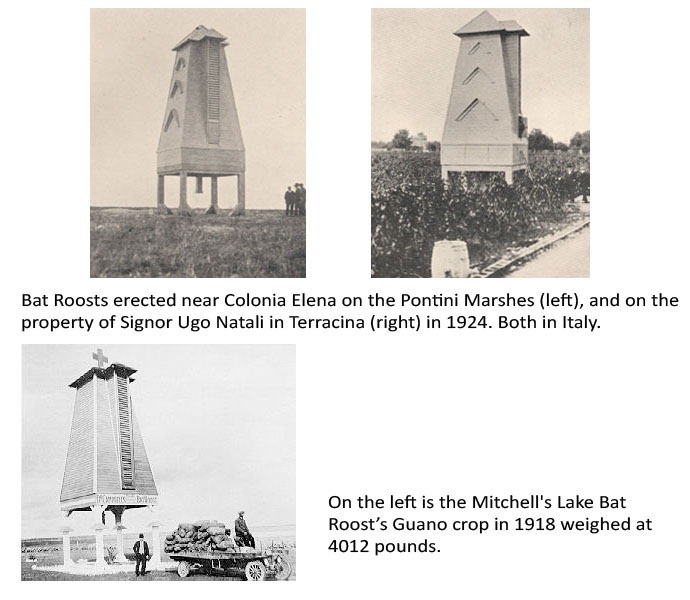In just three years, malaria cases dropped from 15,000 in 1947 to only 2,000 in 1950.
By the end of the next year, malaria was considered eliminated.
In the beginning, Campbell tried to create nests for bats using boxes of assorted sizes and shapes.
But after years of unsuccessful experimentation he realized that unlike birds, bats needed something bigger.
Experimental Farm near San Antonio.
To further attract the nocturnal creatures, he left slices of ham inside.
Unfortunately, for all his effort, not a single bat took the bait.
There, he spent months studying bats in the wild, their behavior and their habitats.
Armed with a wealth of information, Campbell returned and proceeded to build his next bat tower.
Municipal Bat Roost, erected by the City Council of San Antonia, Texas, March 17, 1916.
Campbell finally got a taste of success.
His goal was to drive all the bats out of the hunting lodge and into his tower.
Campbell sought to achieve this by making the hunting lodge acoustically unfit to leave.
The bats with their sensitive hearing found the building too noisy, and as Campbell predicted, flew away.
Campbell repeated the same musical performance at a nearby abandoned ranch house occupied by bats with similar results.
This time the bats took nearly two hours to leave.
The same year, the first city-funded Municipal Bat Roost was built in San Antonio.
Killing bats eventually became illegal all across Texas.
Picnic benches and seats were soon set up allowing visitors to watch the show in comfort.
At its peak, the Mitchell’s Lake roost contained over a quarter of a million bats.
From 1914 to 1929, a total of 16 towers were erected from Texas to Italy.
Only about two or three survive, currently on private property.
Guano is a great fertilizer, and a useful byproduct of the bat towers.
In fact, the Mitchell’s Lake bat tower averaged about two tons of guano a year.
About a thousand bats currently reside there, although its population was once said to be around ten thousand.
The Hygieostatic Bat Roost near Comfort, Texas.
Photo credit:Larry D. Moore/Wikimedia
A less successful bat tower atSugarloaf Keyin Florida.
It was destroyed by a hurricane in 2017.





